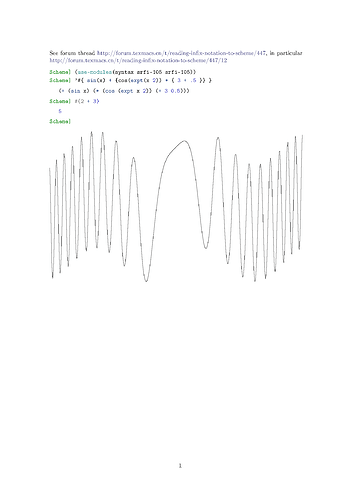Hello all,
Of late, I make simple plots from right within TeXmacs in graphics mode using Shift-! and adding the code ($graph2d a b steps fun).
It is cumbersome to write the fun in prefix notation required by Scheme. But I am wondering, if there is some included module that can convert the typical infix notation found in our math expressions and converts them into prefix. That way, we can simply take a math expression in TeXmacs, do a “Copy to Scheme Code” and paste it into (a modified) $graph2d.
Thanks in advance for your help, as always.
Kind regards,
Murali


